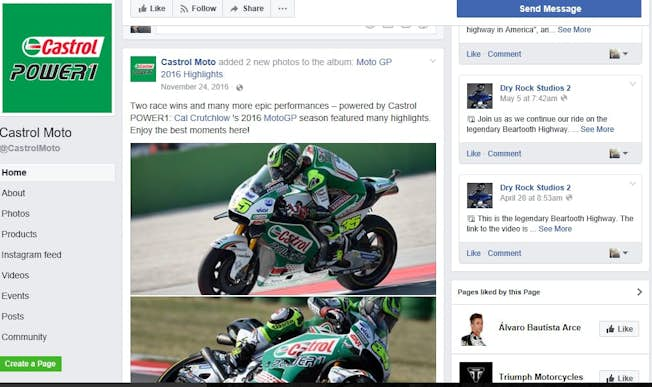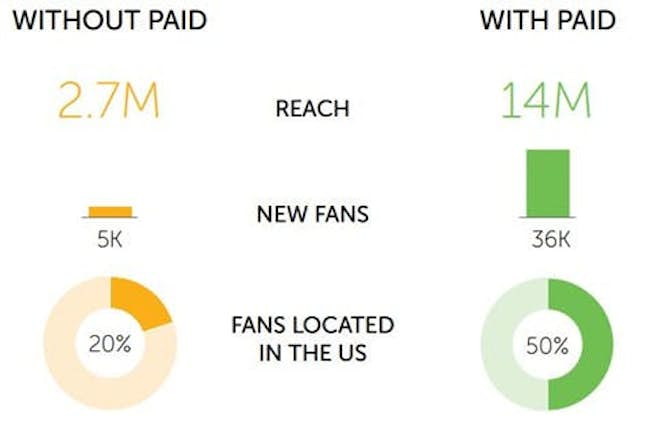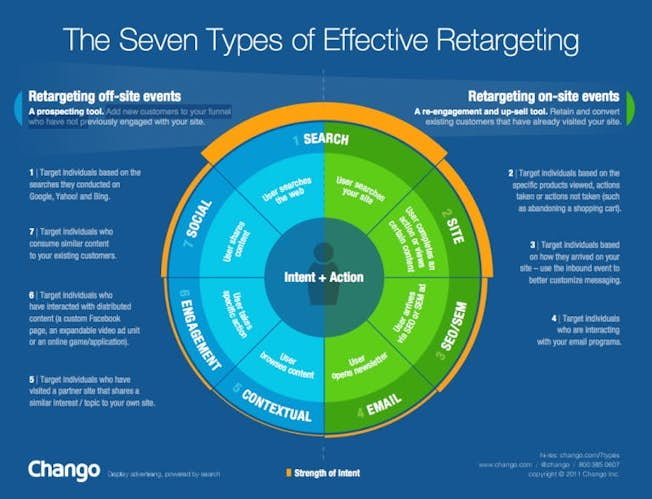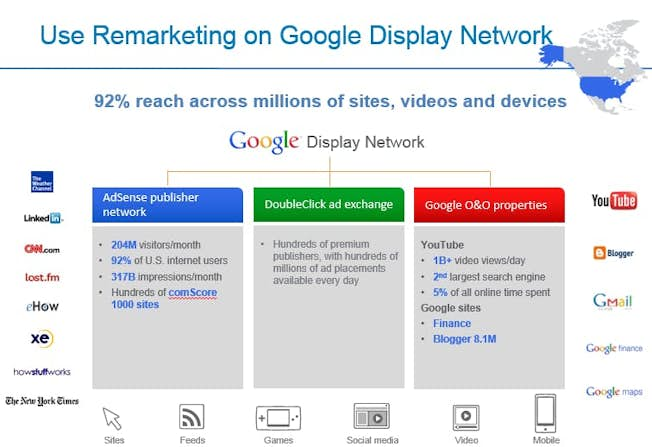Jul 25, 2017
Content Promotion: How to Balance Organic Results with Paid Ads
“Promotion is the step where most companies fail at content marketing. They either think their job is done when they've built it (but no one comes) or they put it on their social channels and wait for the accolades (and conversions) to roll in.” Moz.com
Marketers work countless hours to plan, create and design their content. However, when it’s time for promotion, many fail to find success. According to data research by PointVisible, only 22% of marketers feel "extremely" or "very" successful with their content marketing efforts, and promotion is a big part of that.
Part of the promotional challenge is successfully combining organic results with paid ads on search engines, social media and other websites. Read on for guidance on how you can combine organic and paid tactics to reach peak content promotion success.
Getting Organic: How-To Tips
To achieve effective organic promotion, marketers must grow and leverage their audience. Assuming that you’ve already done a massive amount of research around personas and pain points before creating your content, it’s now time to use that research to support your promotional goals. Here are some ways for you start:
1. Build Influencers: If your company has been around for awhile, good news! You probably already have a built-in influencer base. Based on your research, who would be the best fit to represent your business as a customer? If you can’t quite get there based on your current customer profiles and information from your sales team, use a tool like BuzzSumo or Followerwonk (free trial versions available) to find the users who are best suited for content promotion.
Ask them to act as brand ambassadors and share pieces they find useful. Some companies pay for influencers, but there are pros and cons to this. We recommend considering other forms of compensation. In either case, you can expect high performance. Research shows that for every $1 marketers invest in influencer marketing, they get $6.50 back.
2. Spend Time on Your Blog: Your blog is your brand’s best shot at achieving organic success. When you invest in a wealth of high-quality content that’s published on an ongoing basis, Google is sure to notice. Plus you’ll have excellent material to post on your social media platforms. Follow Moz’s list of blogging best practices here, as well as tips in this great post from Alaniz. And don’t forget to engage with your influencers on your blog (via the comments section) as well.
3. Keep Your PR Team Top of Mind: Your content and PR teams (or tactics, if it’s just you) should be closely knit to ensure content promotion success. Here’s how you can grow your PR success organically:
- Use Followerwonk and search for journalists, as well as the publications you’re interested in and the keywords related to your topic.
- Once you know who to target, get their attention using a well-honed pitch and exciting story ideas.
- Once you’ve secured a journalist/story, don’t stop there, keep going to maximize your outreach!
4. Spend Time on the Right Social Platforms: Marketers must determine which of the many social media platforms are right for their business. The “spray and pray” approach doesn’t work. When you’re on too many networks, you lose sight of your goals and risk over-saturating your audience. That being said, experimenting with new(er) platforms (especially visual ones such as Pinterest and Instagram), can prove incredibly valuable for organic content promotion. Take this example from Wordstream below. The brand got over 1000 pins just by adding the “PinIt” button. That adds up to thousands of potential of new viewers on the Pinterest platform from just one infographic.

Instagram, for its part, is said to generate up to 58 and 120 times more brand engagement than social giants Facebook and Twitter respectively. And don’t forget about other non-traditional social networks, such as industry forums, as well as cross-promotion on publication sites like Medium.
The above tactics are great for reaching your followers organically, so once you decide to pull paid promotion into your strategy, don’t stop using them. Your marketing team can’t thriveon paid or organic promotion alone. Instead, add in paid campaigns that complement and support the success that you’ve already seen from the organic side. If a piece of content doesn’t work well in organicpromotion, paid advertising probably won’t save it. It’s still likely to be your lowest performer.
Combining Paid and Organic Tactics
The above tactics are great for reaching your followers organically, so once you decide to pull paid promotion into your strategy, don’t stop using them. Your marketing team can’t thriveon paid or organic promotion alone. Instead, add in paid campaigns that complement and support the success that you’ve already seen from the organic side. If a piece of content doesn’t work well in organic promotion, paid advertising probably won’t save it. It’s still likely to be your lowest performer.
Organic vs. Paid
Though many marketers use an organic-only approach to promote their content at some point, most end up realizing that they will only achieve the results they want through paid promotion. For example, if you rely on solely organic posts on Facebook, you’ll eventually realize the network is now “pay to play.” The average social media user is exposed to more than a thousand types of content every time he logs in. You can’t expect your brand to break through the noise with organic posts. Moz found that $1 per day in Facebook awareness ads can grow your audience by 4,000 people or more. Whether your purpose is to grow your audience, create loyal social media followers or favorable actions from highly targeted audiences, combining paid and organic tactics for social media and SEO will get results.
Paid Social Media Tactics
In addition to your organic efforts, here are the ways you can funnel money into social media promotion:
- Facebook offers two options: Facebook Promoted Posts, which allows marketers to boost the reach of their otherwise organic posts and Facebook Business (Ads) which gives you the tools to carefully target individuals by region, job title, industry and more. Learn how much these ads really cost here.
- Promoted Tweets is Twitter’s paid promotion machine. This cost-effective method helps marketers reach out to targeted audiences according to specific demographics and targeted criteria. You can set the maximum amount you are willing to spend and easily track and monitor the performance of your campaign.
- Instagram & Snapchat: These “newer,” visually-focused social media platforms the perfect fit for B2C content. Read our guide on Instagram Ads here, and check out HootSuite's guide to Snapchat ads.
Like any paid marketing channel, paid promotions through social media can deliver the type of marketing results you need,if you’re using the appropriate platform for your audience. Find the ones that are right for your business and you’ll easily increase conversions for content marketing success.
Castrol Moto: Facebook Advertising Success Story
Social campaign research from Castrol Moto, as showcased by Contently, shows the power of paid social advertising. The motorcycle division of this company attempted to boost its reach and engagement to targeted audiences in North America using social media marketing – both paid and organic. The first phase involved an organic-only social media marketing campaign that lasted six months. The brand did achieve some results, but they’re not as favorable as they appear in the graph below.Though the brand generated new fans, they weren’t the type of fans they were aiming for--those in the United States.

For an additional six months, the company focused on a targeted paid social campaign while maintaining organic content distribution. Specifically, it created ads and promoted posts targeted by region, interests and age. The results, shown below, speak for themselves:

Content Syndication: Still Kickin’
Content syndication is a time-tested promotion tactic that continues to prove itself effective. Here’s the idea: Instead of simply hoping users find the content on your website, why not also push that content out to the websites they visit most? If you’ve done your persona research, you’ll have some idea of where your target customers spend time online.
Content syndication allows you to publish a piece of content on a different website for others to access, share and post comments. You earn that promotion plus a link back to your website, where the content was originally posted. Content syndication pricing ranges from “very affordable” to “mega companies only need apply” based on the website or syndication company you choose, but there are options for every budget.
Race Towards Retargeting (Remarketing)
Retargeting, also called remarketing, is key to your content’s success. Retargeting is the more commonly used term, however, Google Adwords uses “Remarketing” for its “Retargeting” feature, so both of these terms kind of overlap each other in almost every aspect. For our purposes, we will refer to them as the same.
Retargeting ads are served based on a user’s activity on your website. Once the user visits the site, a cookie is set, and you can now target them on other sites they visit with relevant advertisements. Retargeting is done through third party networks like AdBrite and the Google display network, giving you the opportunity to reach users on millions of sites. You can find the seven types of effective retargeting here, or in the infographic below.

If building your brand is important to you, retargeting is one way to meet that goal. As Larry Kim for WordStream writes:
Cookie everyone who reads your content and make sure they never forget about your brand by chasing them across the Google Display Network with your image ads.
On the Google Display Network, you’ll be able to reach 84% of your visitors 10-18 days out of the month, across 5-10 different sites! That’s a huge way to build your brand

Conclusion
Most companies spend a lot of time creating content, thinking that if they build great content, users will find it, engage with it and move down the sales funnel; but this almost never works.
There’s so much “noise” dictating that your great content will never get the attention it deserves. To achieve content marketing success, build your brand by creating and promoting valuable content organically first, then make adding in paid promotion where it makes sense to achieve your content marketing ROI goals.
Upgrade to Power Membership to continue
your access to thousands of articles, toolkits, podcasts, lessons and much much more.
Become a Power Member- Login
- View Courses
- - - -
- Courses
- Resources
- - - -
- My Account
- Change Password
- Logout




